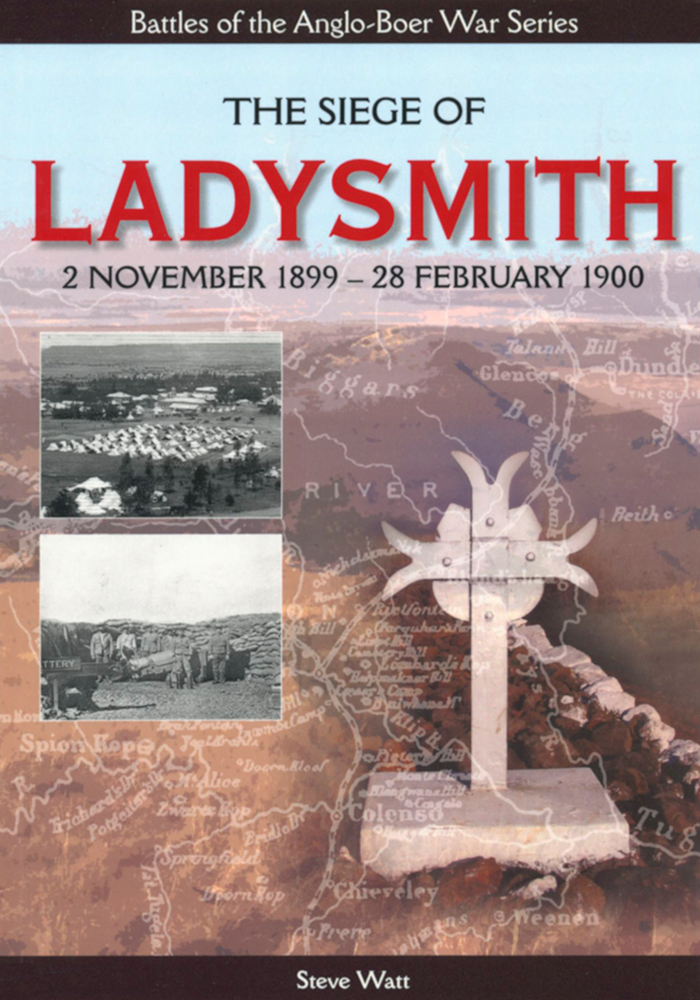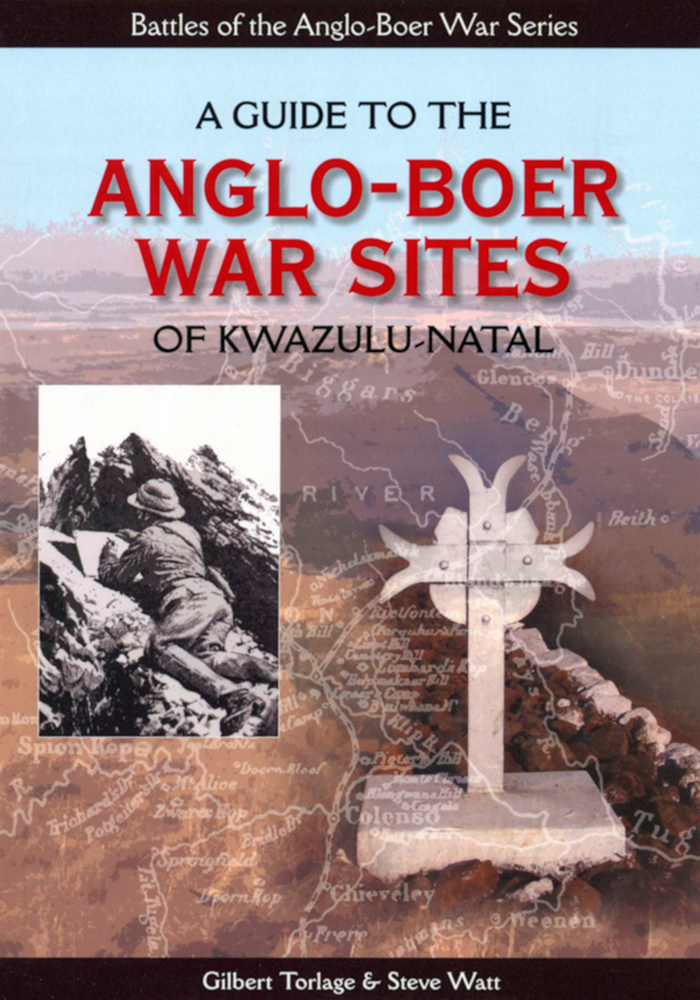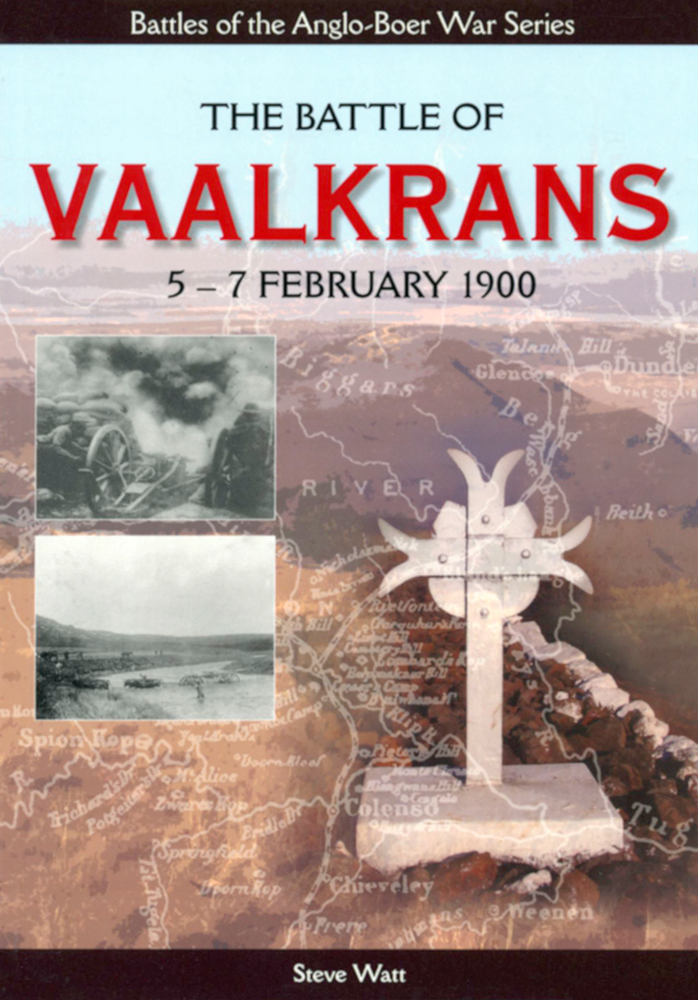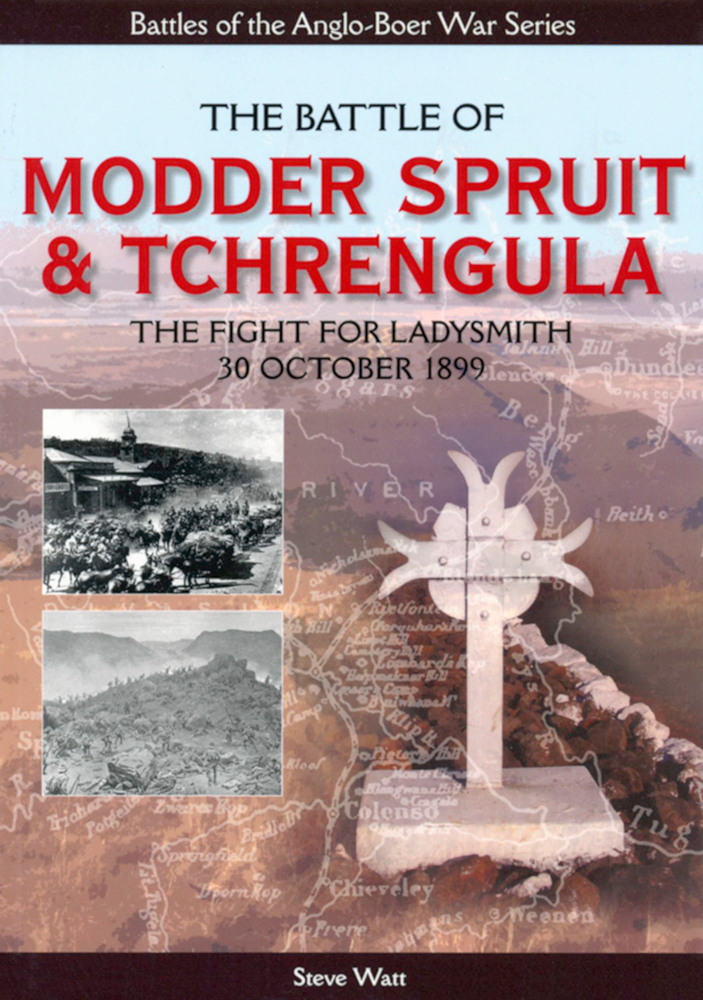The Siege Of Ladysmith, by Steve Watts
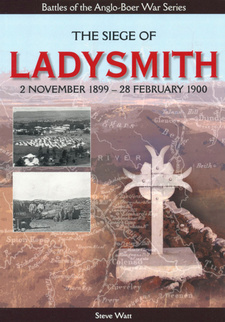
The Siege Of Ladysmith, by Steve Watts. he Anglo-Boer War Battle Series. 30 Degrees South Publishers (Pty) Ltd. 2nd edition. Johannesburg, South Africa 2014. ISBN 9781928211440 / ISBN 978-1-928211-44-0
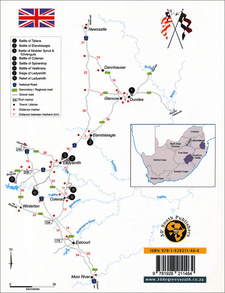
Overview map of the siege of Ladysmith.
In Anglo-Boer War Battle Series, Steve Watts describes The Siege Of Ladysmith, in this excerpt giving background information to the reader.
[...] On 11 October 1899 the Anglo-Boer War began with the Boer invasion of the Natal and Cape colonies. Nowhere, from a Boer point of view, did the situation call more urgently for immediate action than on the Natal border. Both the Transvaal commandos and those from the Orange Free State invaded Natal via passes in the Drakensberg. It was obvious to the Natal government that the Boers were planning to cut off the British forces north of the Thukela River. Major-General Sir William Penn Symons, with a force concentrated in Dundee, declined to retire to Ladysmith, where a larger force under Lieutenant-General Sir George White VC had gathered. Symons hoped that he could hold Dundee. The Boers attacked Dundee from Talana Hill (20 October 1899), and although repulsed, Brigadier-General Yule, on whom devolved the command (Symons being mortally wounded), decided to withdraw to Ladysmith. In a effort to restore railway communication with Dundee, White attacked the Boers at Elandslaagte (21 October 1899), where the Boers were driven off. After receipt of the news about Boer reverse, the Free State commandos were ordered to Elandslaagte. The arrival of the enemy on the heights north of Ladysmith increased White's anxiety for the safety of the British column retiring from Dundee. There followed an engagement at Rietfontein (24 October 1899). This was an inconclusive event with neither side claiming victory. The British retired to Ladysmith and the Boers advanced unopposed on the town uniting their forces for a planned encirclement. White responded with an attack on the Boers to the north and east of the town, but was repulsed (30 October). On 1 November at a council of war, attended by the Transvaal and Free State Commandants, it was resolved that their commandos should besiege Ladysmith and prevent the escape of White's force. They hoped to bring the surrender of the garrison with an artillery bombardment, before many days passed. Although the siege would paralyse his power of offence, White, with his force in Ladysmith, hoped to detain the bulk of the Boer invading forces north of the Thukela river, and thereby to save Pietermaritzburg and Durban from falling into the hands of the Boers. Whilst retreat across the Thukela was still possible, White considered that such a venture would be too risky. It was thought that the nature of the country favoured the Boers. The events on 30 October had shaken the British commander's belief in the striking power of his force. White was also impressed by the numbers of Boers present and their mobility. From Pepworth Hill the Boer artillery bombardment of the town started at 05:30 on 30 October 1899. The most noteworthy piece was the 155mm Creusot, soon to be dubbed "Long Tom" which fired a 46 kg shell over a range of more than 10 kilometres. Three days later a British reconnaissance force advanced in a south-westerly direction and drew fire from a Boer force beyond Middle Hill. The British lost five men killed, including two officers, and 28 wounded. The Boer encirclement of Ladysmith was complete and had trapped 13 745 Imperial troops with 51 guns, 18 machine guns and about 7 600 civilians in it. The siege became effective from 2 November 1899. White had more than sufficient stores to feed the troops and civilians for three months. Requisitions from the shops and hotels brought in additional food. The ammunition for rifles and artillery was thought to be adequate. Other than shelling the town into submission the Boers had no other ideas on how to bring about the fall of Ladysmith. [...]
This is an excerpt from The Siege Of Ladysmith, by Steve Watts.
Title: The Siege Of Ladysmith
Subtitle: 2 November 1899-28 February 1900
2 November 1899–28 February 1900
Author: Steve Watt
Series: The Anglo-Boer War Battle Series
Publisher: 30 Degrees South Publishers (Pty) Ltd.
2nd edition. Johannesburg, South Africa 2014
ISBN 9781928211440 / ISBN 978-1-928211-44-0
Softcover, 15 x 21 cm, 48 pages, 25 b/w photos and maps
Watt, Steve im Namibiana-Buchangebot
The Siege Of Ladysmith
This volume of the Anglo-Boer War Battle Series introduces to the The Siege Of Ladysmith that lasted from 2 November 1899 until 28 February 1900.
A Guide to the Anglo-Boer War Sites of KwaZulu-Natal
This guide leads to the majority of the Anglo-Boer War sites scattered throughout KwaZulu-Natal.
The Battle of Vaalkrans: 5–7 February 1900
The Battle of Vaalkrans on 5 th to 7th February 1900 is part of The Battles of the Anglo-Boer War Series.
The Battle of Modder Spruit and Tchrengula
The Battle of Modder Spruit and Tchrengula on 30 October 1899 resulted in the defeat of British arms.

